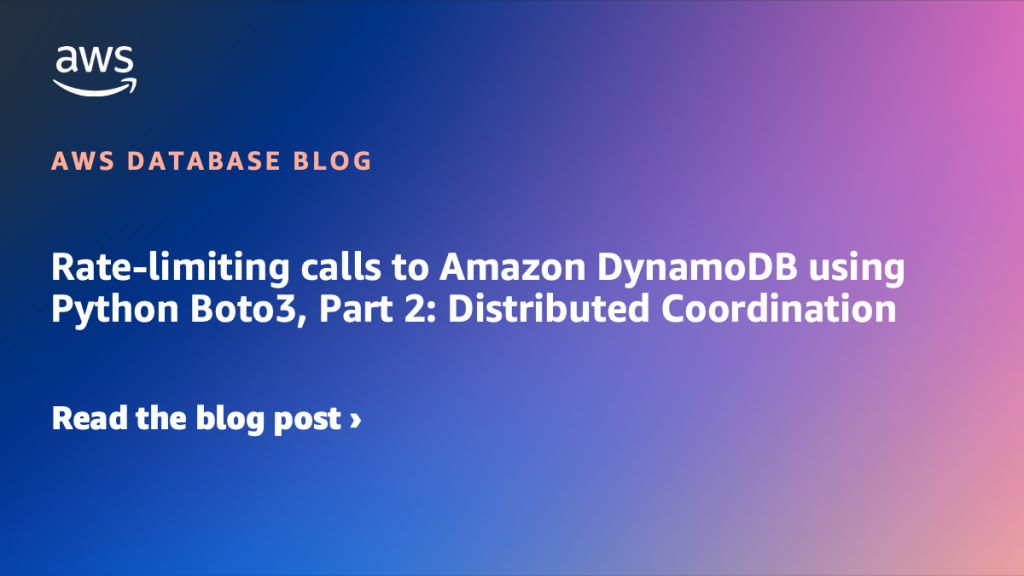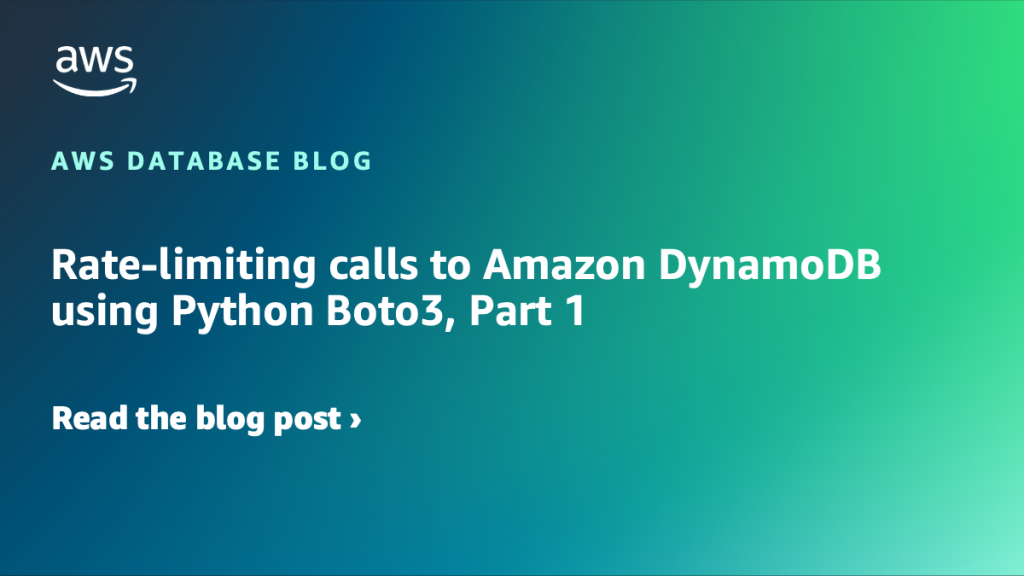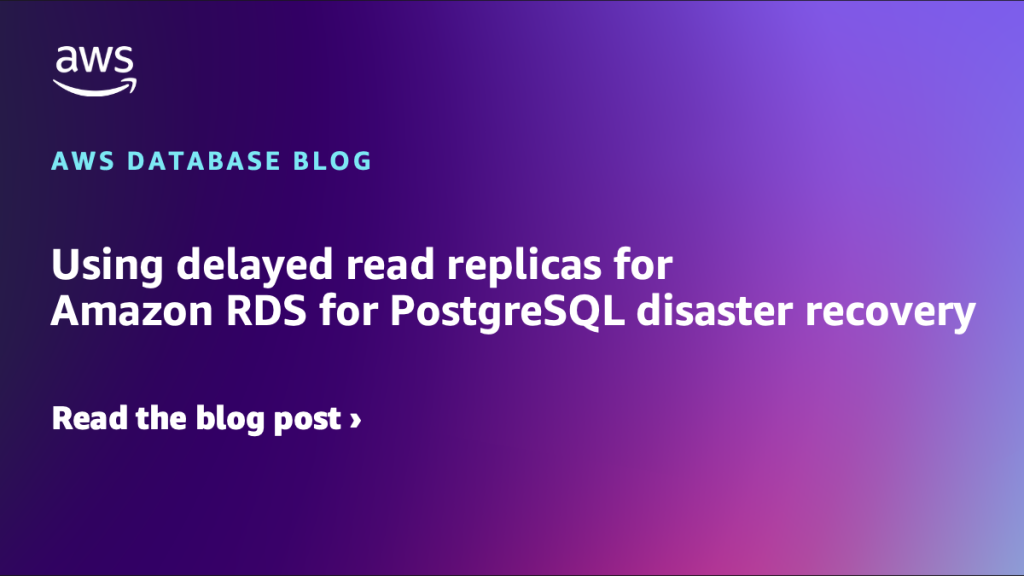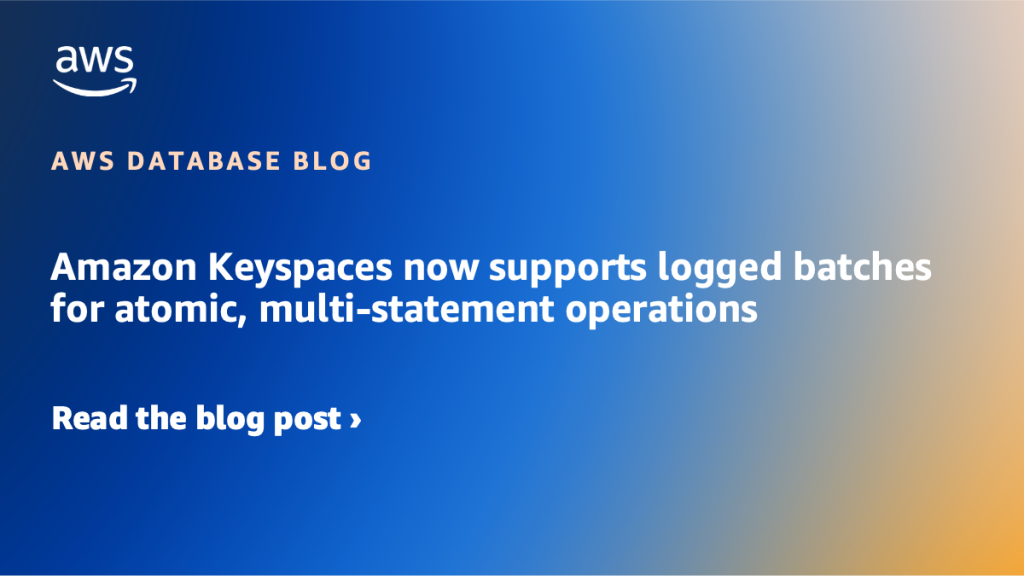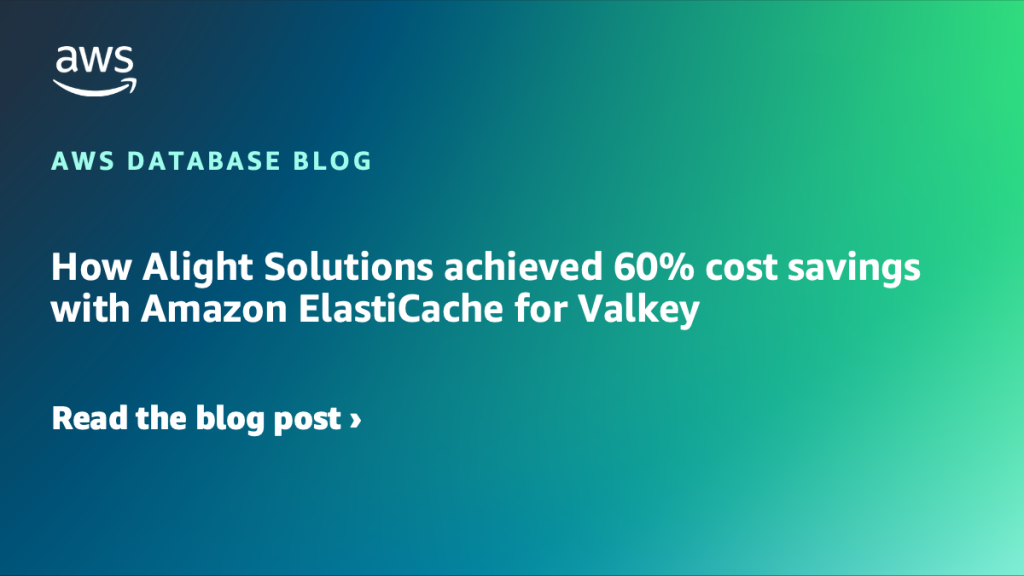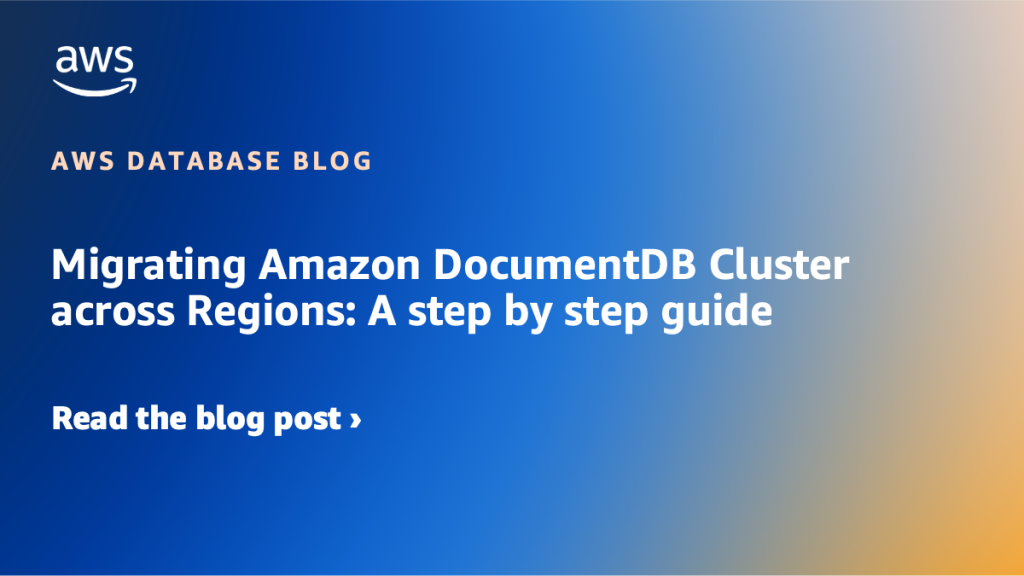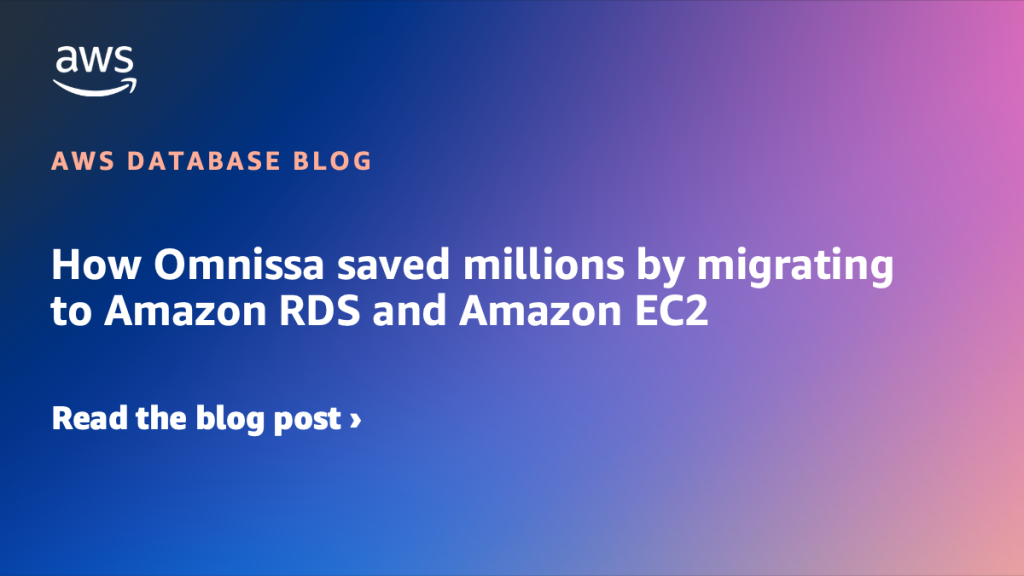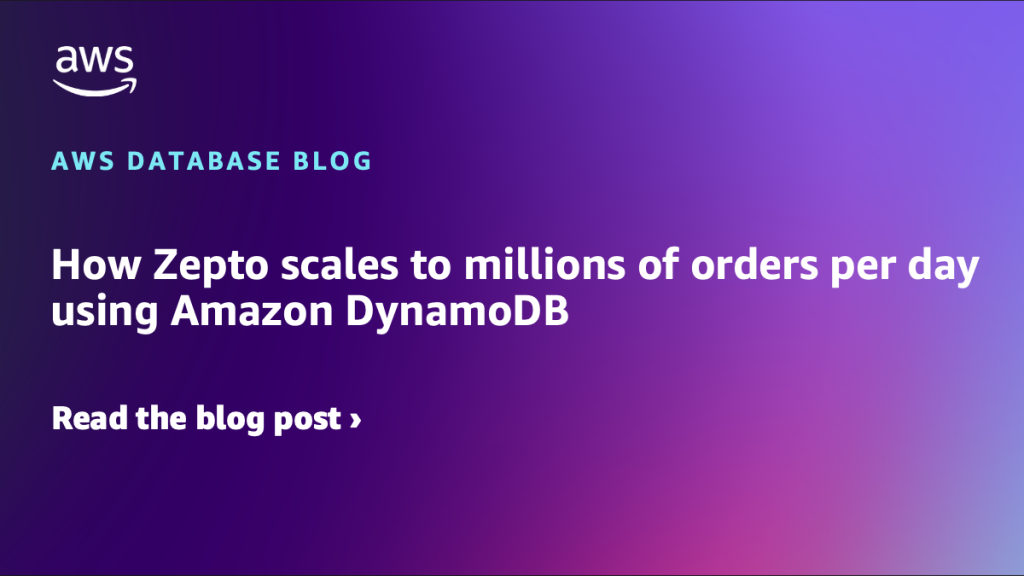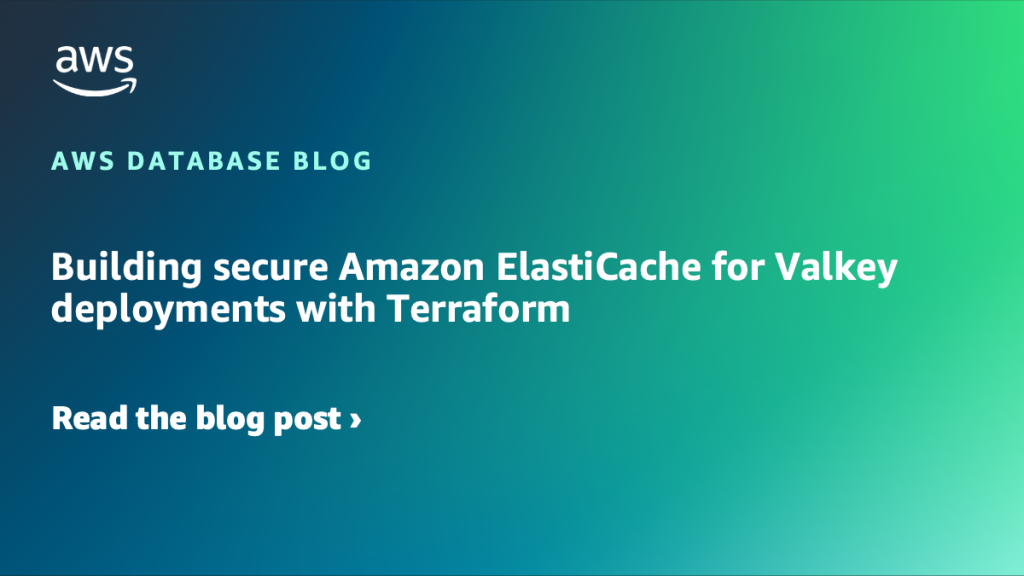AWS Database Blog
Category: Learning Levels
Rate-limiting calls to Amazon DynamoDB using Python Boto3, Part 2: Distributed Coordination
Part 1 of this series showed how to rate-limit calls to Amazon DynamoDB by using Python Boto3 event hooks. In this post, I expand on the concept and show how to rate-limit calls in a distributed environment, where you want a maximum allowed rate across the full set of clients but can’t use direct client-to-client communication.
Rate-limiting calls to Amazon DynamoDB using Python Boto3, Part 1
In this post, I present a technique where a Python script making calls to Amazon DynamoDB can rate limit its consumption of read and write capacity units. The technique uses Boto3 event hooks to apply the rate limiting without having to modify the client code performing the read and write calls.
Using delayed read replicas for Amazon RDS for PostgreSQL disaster recovery
In this post, we explore the use cases for delayed replication, the recovery procedures, and best practices for managing delayed replicas to help ensure your database recovery strategy is both robust and efficient.
Amazon DocumentDB (with MongoDB compatibility) introduces new query planner that delivers up to 10x performance improvements
On Oct 28, 2025, Amazon DocumentDB (with MongoDB compatibility) introduced a new query planner (NQP) to improve database performance and stability. The redesigned architecture uses improved cost estimation techniques and optimized algorithms for smarter query plan selection.
Amazon Keyspaces now supports logged batches for atomic, multi-statement operations
Today, we are announcing Amazon Keyspaces (for Apache Cassandra) support for logged batches, a powerful feature that brings atomic, all-or-nothing write operations to your Apache Cassandra-compatible workloads. In this post, we explore the benefits of logged batches, demonstrate how to set up and run them, and discuss important considerations when using logged batches with Amazon Keyspaces.
How Alight Solutions achieved 60% cost savings with Amazon ElastiCache for Valkey
Alight Solutions is a leading cloud-based human capital technology and services provider that has focused its operations on integrated benefits administration, healthcare navigation, and employee experience solutions. In this post, we share how Alight Solutions transformed their caching infrastructure using ElastiCache while maintaining strict performance requirements, achieving over 60% cost reduction, 70-80% reduction in operational overhead, migration of gigabytes of data with sub-0.5 millisecond performance for millions of users, and a 99.99% reduction in incident rate.
Migrating Amazon DocumentDB Cluster across Regions: A step by step guide
In this post, you will learn to migrate a regional Amazon DocumentDB cluster from one AWS Region to another using the Global Cluster feature with low downtime and without performance impact.
How Omnissa saved millions by migrating to Amazon RDS and Amazon EC2
Omnissa is a digital workspace technology leader that delivers smart, seamless, and secure digital work experiences for organizations worldwide. It serves 26,000 customers, including the top seven of the Fortune 500 companies. In this post, we walk through the Omnissa’s journey of migrating its mission-critical UEM platform and self-managed SQL Server workloads from VMware Cloud on AWS (VMC-A) to Amazon RDS for SQL Server and its application servers to Amazon EC2.
How Zepto scales to millions of orders per day using Amazon DynamoDB
In this post, we describe how Zepto transformed its data infrastructure from a centralized relational database to a distributed system for select use cases. We discuss the challenges encountered with Zepto’s original architecture to support the business scale, the shift towards using key-value storage for cases where eventual consistency was acceptable, and Zepto’s adoption of Amazon DynamoDB.
Building secure Amazon ElastiCache for Valkey deployments with Terraform
In this post we show you how to build a secure Amazon ElastiCache for Valkey cluster using Terraform, implementing best practices and comprehensive security controls including encryption, authentication, and network isolation.
